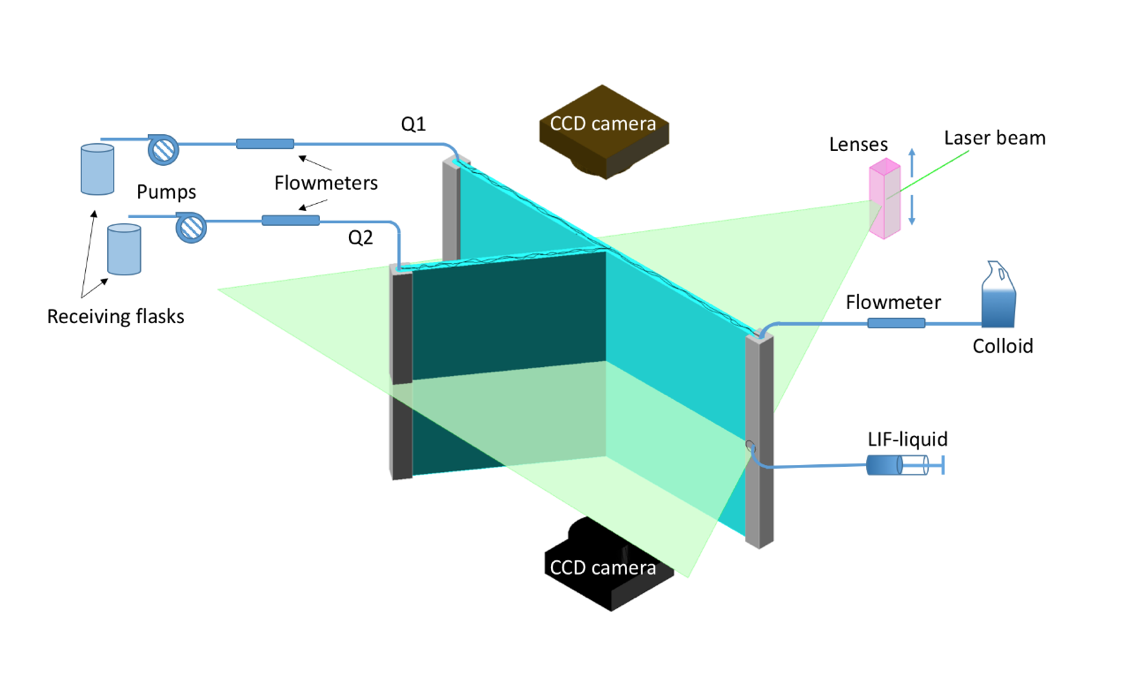PROJECTS
Description
Introduction
 Preliminary numerical simulation of solute transport in an example synthetic bifurcated fracture using our in-house lattice-Boltzmann simulator, LBHydra (Walsh and Saar, 2010). The concentration is scaled from 0 to 1.
Preliminary numerical simulation of solute transport in an example synthetic bifurcated fracture using our in-house lattice-Boltzmann simulator, LBHydra (Walsh and Saar, 2010). The concentration is scaled from 0 to 1.
 Laboratory experiment of fluid and solute transport through a bifurcating fracture.
Laboratory experiment of fluid and solute transport through a bifurcating fracture.
With our cutting-edge fluid and solute transport visualization and quantitative measurement system, that combines Particle Image Velocimetry (PIV) with Laser-induced Fluorescence (LIF), we can simultaneously monitor the evolution of the 3D, multiphase fluid velocity field and associated solute transport, including quantification of 3D solute concentrations within a fractured porous medium. This combination of capabilities is, to the best of our knowledge, a first worldwide, enabling new insights into solute transport mechanisms in fractured porous media. Having such 3D data, we can then use it to develop and test our numerical multiphase-multicomponent simulators (the actual computer codes) and the numerical models simulating the transport of solutes and heat in fractured, porous media, including fractured geothermal systems (e.g., enhanced geothermal systems). Being able to validate our in-house and other simulators at the small (laboratory) scale is critical to enable subsequent large-scale (actual field, reservoir, geothermal system scale) numerical simulations systems at actual field scales. Based on both the laboratory-scale experimental and associated numerical modeling results, we expect to develop a method to quantify the connectivity of heterogeneous fracture systems and to derive an upscaling method. New insights of the physics at the small scale are then used to interpret tracer breakthrough curves obtained from field tracer tests (e.g., at the DUG Lab, or at the follow-up Flagship experiment at the Bedretto Tunnel and later at Haute-Sorne), i.e., at EGS research and pilot/demonstration sites.
 Preliminary PIV test on 3D-printed bifurcated fracture. (Left) Setup of the test, (Middle) screenshot of injected Rhodamine particles exited by a 10W CW-Demo laser at a wavelength of 532 nm, and (Right) reconstructed fluid velocity field.
Preliminary PIV test on 3D-printed bifurcated fracture. (Left) Setup of the test, (Middle) screenshot of injected Rhodamine particles exited by a 10W CW-Demo laser at a wavelength of 532 nm, and (Right) reconstructed fluid velocity field.


